21 Oct Risk Contingency Planning: Developing a Good Plan B
What are the most common events that you often associate with risk contingency planning? Fires, floods, and hurricanes – aren’t these natural disasters that you seem to link with contingency planning?
But what if one of your suppliers from the main chain goes bankrupt, or your website has been hacked, and your whole system comes crashing down?
Are you getting the point here? When it comes to contingency planning, it is not explicitly limited to major crises such as natural disasters. Organizations can also formulate contingency plans to deal with certain common workplace problems. This can include breach of privacy, or loss of data, or deteriorating customer or business relationships. Hence, every business must have a sound contingency plan and make it an essential part of the working routine.
Conduct a risk assessment test
Every business or organization encounters a specific set of risks to preplan to minimize any potential damage. You can do so by conducting a rigorous risk assessment test.
Identifying your critical business operations is the first step to do so. This includes all key processes and structures without which a business cannot operate. Typical examples could be that of your internet connection or supply chain.
Once this is done, the next step is to identify any lurking threats that could harm critical business operations. These could include but are not limited to losing key employees, a technical glitch, or an unexpected change in government policy.
There is a high chance that you end up with a seemingly long list of potential threats to your business. However, it can be unrealistic to even think about attempting contingency planning for each of them. Hence, as a business, you must prioritize what needs the most attention.
Risk Impact or Probability Charts
It is natural for the business to feel lost. Therefore, probability charts are a smart way to determine your priorities.
Speaking of this, these charts can provide immense assistance when it comes to analyzing how a potential risk will most likely occur and what level of impact it will bring in.
Moreover, this will further clarify which risks require the most attention in terms of expense and effort associated with risk mitigation.
To put things in perspective, those areas of risk are at the top of the list on which the said business’s survival heavily depends. This can include maintaining and regulating cash flow.
Keep things simple
Make sure to use simple language when you are preparing to write your contingency plan. You never know when you need to put the plan into action or who will read it, so make sure it is free of jargon so that even a layperson can comprehend.
Moreover, it is for the same reason that we recommend using job titles rather than names when you define task responsibilities. This will ensure that the contingency plan remains relevant in the long-term.
If you want help creating and implementing risk contingency planning for your business. Talk to us today!
To find out more, contact one of our talented Risk Advisors today!


No Comments